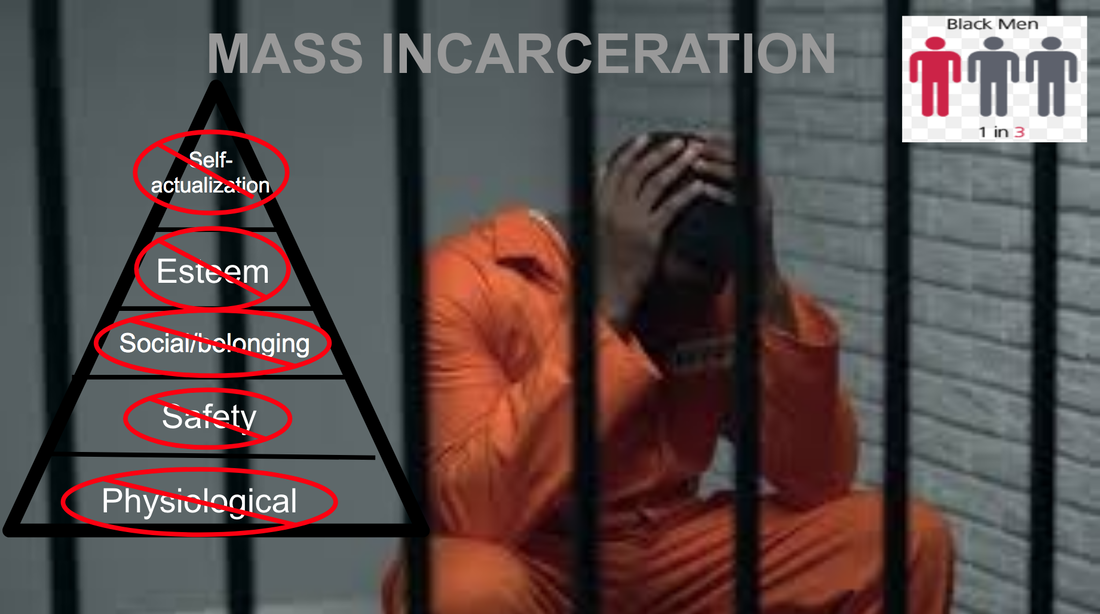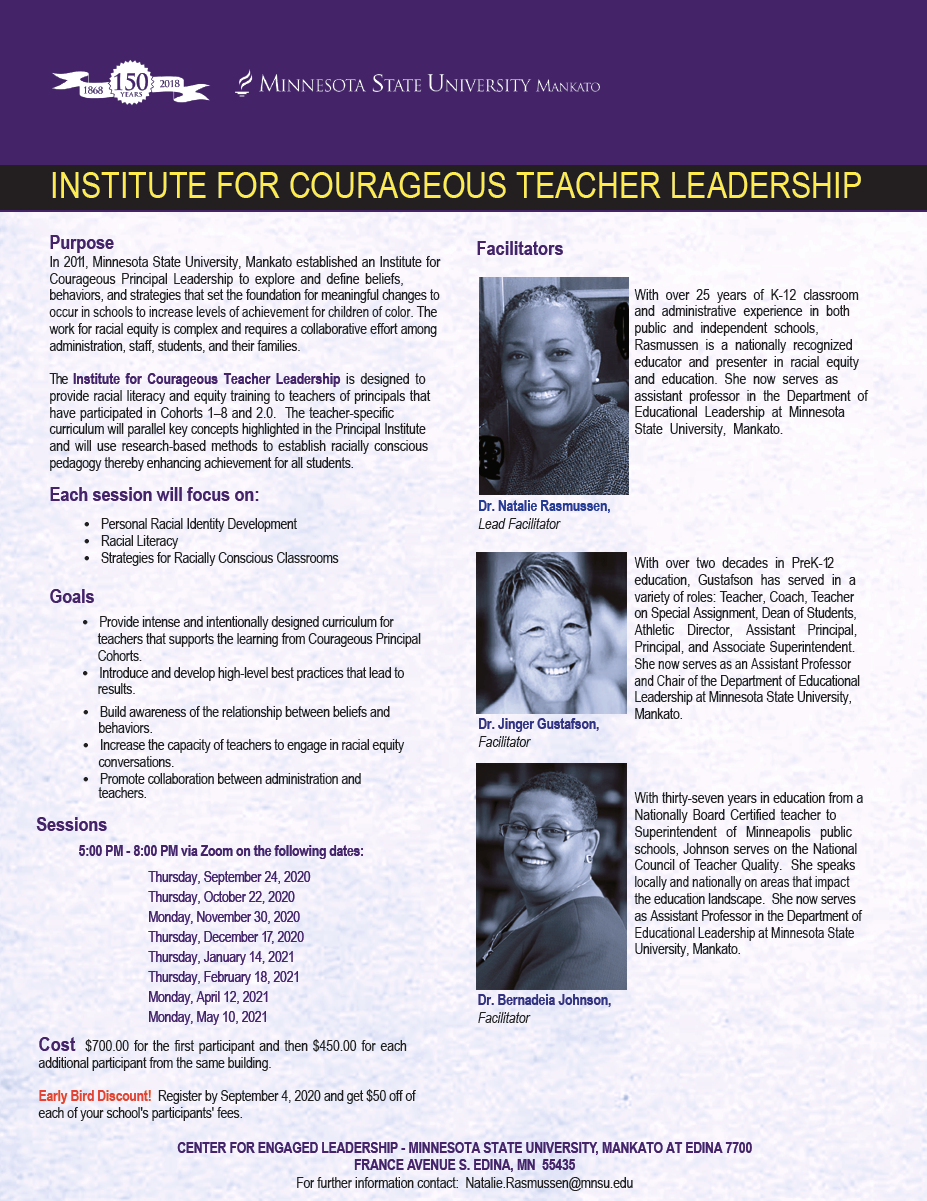Refine and implement course designs and syllabi.
Since my last Professional Development Report on May 13, 2019, I have amassed syllabi and evaluations from the courses I taught in Summer 2019, Fall 2019, Spring 2020, and Summer 2020. As I have had the good fortune to teach a few of these classes multiple times, I have had the opportunity to revise and improve my syllabi and courses in terms of clarity of expectations, best practices for andragogy, and weaving in a requirement for demonstrating learning around racial equity in education. While my evaluations have been and continue to be consistently very high, averaging 4.6-5.0, I place a lot of value in the comments and suggestions I recieve from students in order to meet their needs and strengthen my own practice as an instructor. See the links below for the individual course syllabi and the evaluations.
|
Syllabi
|
Course Evaluations
|
|
EDLD 747 – Organizational Theory and Analysis
EDLD 671 – Introduction to School Administration EDLD 672 – Policy and Administration EDLD 673 – Leadership of Special Programs EDLD 674 – Supervision and Administration EDLD 698 – Internship in Administration 1 EDLD 698 - Internship In Administration 2 EDLD 670 – Portfolio Review EDLD 647 – Organization and Systems Change EDLD 646 – Leadership for Race and Culture |
| ||||||||||||||||||||||||
| summer_2020-edld-647-82-organizational___systems_change.pdf | |
| File Size: | 55 kb |
| File Type: | |
| summer_2020-edld-646-82-leadership_and_instruction_for_race_and_culture.pdf | |
| File Size: | 52 kb |
| File Type: | |
| summer_2020-edld-670-82-portfolio_review.pdf | |
| File Size: | 47 kb |
| File Type: | |
| summer_2020-edld-698-83-internship_in_administration.pdf | |
| File Size: | 48 kb |
| File Type: | |
Provide an increased level of required academic engagement with improved quality of feedback and suggestions for student work.
Student assignments were designed to be more layered and complex in the skills they were meant to demonstrate. Many assignments were expected to demonstrate student proficiency in reading, writing, research, thinking, technology, creativity, and concepts of racial equity.
Below are examples of an assignment from EDLD 647 - Organization and Systems Change, a student's work, the rubric, and the feedback that the student received.
SLIDE: Create 1 slide that represents the relationship between the HUMAN RESOURCE Frame and how it relates to some named form of institutional racism. The slide should include illustrations or images and minimal text. (5 Points)
PAPER: In no more than 3 pages, explain or summarize your slide and reflect on how you, as a leader, might use the HUMAN RESOURCE frame to effect change in relation to that particular aspect of institutional racism. You should include at least three scholarly citations to support your claims. (15 Points)
Make sure that your written vocabulary clearly demonstrates that you have a firm grasp of the information provided in class and in your textbook. Full percentage points are earned for meeting assignment criteria, submitting by the due dates, quality of writing, and evidence of mindful thought and effort.
Below are examples of an assignment from EDLD 647 - Organization and Systems Change, a student's work, the rubric, and the feedback that the student received.
SLIDE: Create 1 slide that represents the relationship between the HUMAN RESOURCE Frame and how it relates to some named form of institutional racism. The slide should include illustrations or images and minimal text. (5 Points)
PAPER: In no more than 3 pages, explain or summarize your slide and reflect on how you, as a leader, might use the HUMAN RESOURCE frame to effect change in relation to that particular aspect of institutional racism. You should include at least three scholarly citations to support your claims. (15 Points)
Make sure that your written vocabulary clearly demonstrates that you have a firm grasp of the information provided in class and in your textbook. Full percentage points are earned for meeting assignment criteria, submitting by the due dates, quality of writing, and evidence of mindful thought and effort.

Your browser does not support viewing this document. Click here to download the document.
Susan,
Thank you for your "Incarcerated Black man juxtaposed against Maslow's hierarchy" slide and the corresponding explanation paper. Wow. Just. Wow. Not only is your story and evidence compelling, but your writing and other technical aspects are very well done! You truly captured the essence of the purpose of this assignment and applied the Human Resource frame to demonstrate an example of institutionalized racism - exactly what so many black men experience due to the school-to-prison pipeline. You were able to support your claims with relevant research from several scholarly sources and properly demonstrate your firm grasp of APA 7th edition convention.
Brilliant!
Thank you for your "Incarcerated Black man juxtaposed against Maslow's hierarchy" slide and the corresponding explanation paper. Wow. Just. Wow. Not only is your story and evidence compelling, but your writing and other technical aspects are very well done! You truly captured the essence of the purpose of this assignment and applied the Human Resource frame to demonstrate an example of institutionalized racism - exactly what so many black men experience due to the school-to-prison pipeline. You were able to support your claims with relevant research from several scholarly sources and properly demonstrate your firm grasp of APA 7th edition convention.
Brilliant!
Lead Facilitator of the Institute for Courageous Teacher Leadership
|
As a co-facilitator of the first and second cohorts of the Institute for Courageous Teacher Leadership, I was largely responsible for the content and the coordination of the recruitment and communication. As we prepare for this, the third cohort of the teacher institute, I have taken on the role of Lead Facilitator which requires me to
|
Coach participants in Cohorts 8 and 9 in the Institute for Courageous Principal Leadership
|
As a coach for members of both Cohort 8 and Cohort 9, I was able to form and deepen the relationships that I had with the school leaders from several districts. During our coaching sessions, we were able to have meaningful and productive conversations about how each of them were leading for racial equity in their respective buildings. I was privy to their triumphs and struggles with their districts, their teachers, their parents and students, and themselves as they explored who they were becoming as equity leaders. On occasion, I was asked to present some curriculum and content that I designed and developed to the Cohorts including Black Girls in Schools; Stereotype Threat; Internalized Racism; and the Tenets of Critical Race Theory.
I am grateful for the opportunity to participate with my colleagues Dr. Candace Raskin, Dr. Melissa Krull, and Pam MacKinnon in the Institute with its real-world, racial equity theory-to-practice approach to school leadership. |
Proudly powered by Weebly



